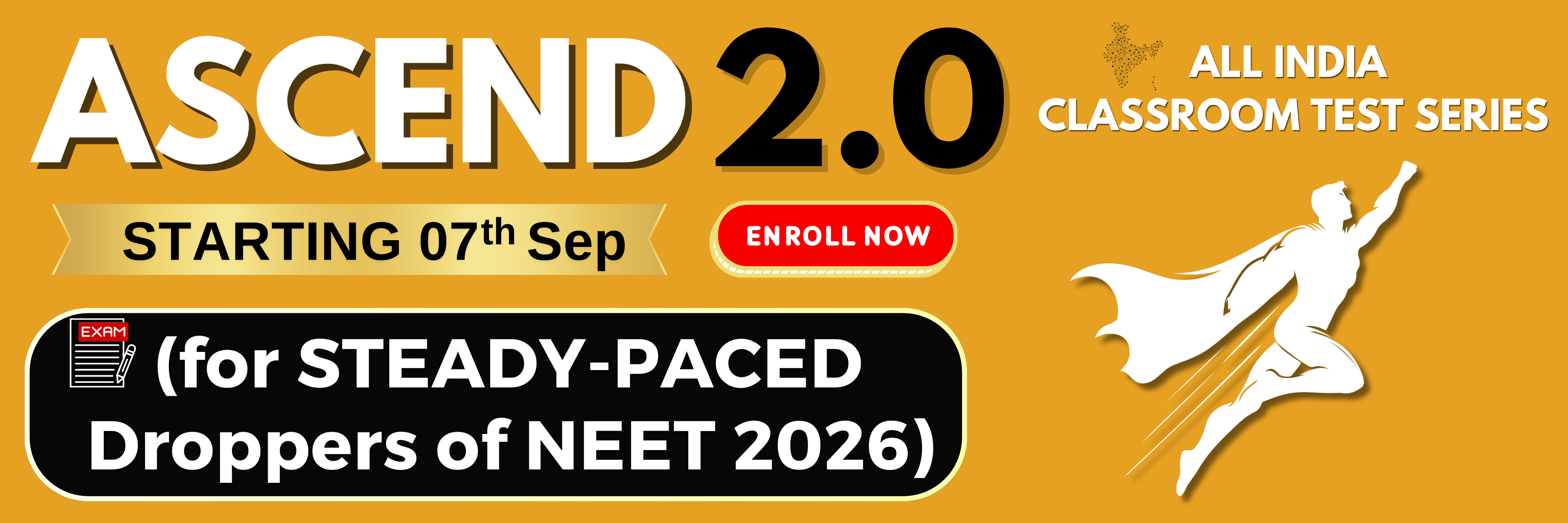Select Chapter Topics:
The stalk of the inflorescence is called
1. Pedicel
2. Petiole
3. Peduncle
4. Phyllode
Subtopic: Inflorescence | Flower & Parts of Flower |
Level 3: 35%-60%
Please attempt this question first.
Hints
Please attempt this question first.
In ovary, many ovules can be seen in all, except:
1. Fabaceae
2. Solanaceae
3. Brassicaceae
4. Poaceae
Subtopic: Families of Flowering Plant: I |
58%
Level 3: 35%-60%
Please attempt this question first.
Hints
Thorns are
1. a and b only
2. b and c only
3. a and c only
4. All a, b and c
| a. | Modified axillary buds |
| b. | Found in Citrus |
| c. | Modifications of stem to protect plants from browsing animals |
2. b and c only
3. a and c only
4. All a, b and c
Subtopic: Morphology of Stems |
61%
Level 2: 60%+
Please attempt this question first.
Hints
Please attempt this question first.
The members of Family Liliaceae have six:
1. Only I and II
2. Only I and III
3. Only II and III
4. I, II and III
| I: | Tepals |
| II: | Fused carpels in the ovary |
| III: | Stamens |
2. Only I and III
3. Only II and III
4. I, II and III
Subtopic: Semi Technical Description |
56%
Level 3: 35%-60%
Please attempt this question first.
Hints
Please attempt this question first.
Identify the incorrectly matched pair:
| 1. | Having the sepals united | Gamosepalous |
| 2. | Sterile stamen | Staminate |
| 3. | Stamens attached to perianth | Epiphyllous |
| 4. | Having the carpels of the gynoecium united in a compound ovary | Syncarpous |
Subtopic: Flower & Parts of Flower |
Level 3: 35%-60%
Please attempt this question first.
Hints
Please attempt this question first.
Identify the correct statement(s) regarding the modifications seen in stems:
| I: | Stem tendrils develop from axillary buds and help plants, such as pea, to climb |
| II: | Opuntia modifies its stems into flattened structures to protect itself from browsing animals |
| III: | Underground stems of some plants such as grass and strawberry spread to new niches and when older plants die, new plants are formed. |
| 1. | I, II, and III |
| 2. | Only II and III |
| 3. | Only III |
| 4. | Only I and III |
Subtopic: Modifications of Stem |
Level 3: 35%-60%
Please attempt this question first.
Hints
Please attempt this question first.
Colchicum autumnale:
1. is non-endospermous
2. has dithecous anther
3. has reticulate venation
4. exhibits axile placentation
1. is non-endospermous
2. has dithecous anther
3. has reticulate venation
4. exhibits axile placentation
Subtopic: Semi Technical Description |
57%
Level 3: 35%-60%
Please attempt this question first.
Hints
Please attempt this question first.
Among flowers of Calotropis, tulip, Sesbania, Asparagus, Colchicine, Sweet pea, Petunia, Indigofera, Mustard, Soybean, Tobacco and groundnut how many plants have corolla with valvate aestivation?
| 1. | Six | 2. | Seven |
| 3. | Eight | 4. | Five |
Subtopic: Flower & Parts of Flower |
Level 3: 35%-60%
NEET - 2013
To view explanation, please take trial in the course.
NEET 2026 - Target Batch - Vital
Hints
To view explanation, please take trial in the course.
NEET 2026 - Target Batch - Vital
The number of correct statements from the given statements is:
| I: | In a typical dicotyledonous embryo, the portion of the embryonal axis above the level of cotyledons is the epicotyl, which terminates with the plumule or stem tip. |
| II: | In a typical dicotyledonous embryo, the cylindrical portion below the level of cotyledons is hypocotyl, and it terminates at its lower end in the radicle or root tip. |
| III: | In the grass family, the cotyledon is called the scutellum, which is situated towards one side (lateral) of the embryonal axis. |
| IV: | At its lower end, the embryonal axis in monocots has the radical and root cap enclosed in an undifferentiated sheath called coleorhiza. |
| V: | In monocots, the portion of the embryonal axis above the level of attachment of the scutellum is the epicotyl. |
| 1. | 2 | 2. | 3 |
| 3. | 4 | 4. | 5 |
Subtopic: Seed |
56%
Level 3: 35%-60%
Please attempt this question first.
Hints
Please attempt this question first.
Given below are two statements:
| Assertion (A): | Leaves showing parallel venation are found in monocotyledonous plants |
| Reason (R): | In leaves showing parallel venation, the veins run parallel to one another, veinlets are inconspicuous and reticulations are absent |
| 1. | Both (A) and (R) are true and (R) is the correct explanation of (A). |
| 2. | Both (A) and (R) are true but (R) is not the correct explanation of (A). |
| 3. | (A) is true but (R) is false. |
| 4. | Both (A) and (R) are false. |
Subtopic: Morphology of Leaf |
55%
Level 3: 35%-60%
Please attempt this question first.
Hints
Please attempt this question first.
Select Chapter Topics:






